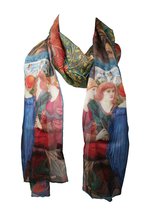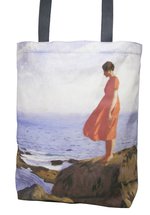100 Years of Collecting
A long-term display of paintings and objects from the Laing's collection, from the 15th century to the present day.

Dates
Permanent
Visitor Information
Open Monday - Saturday, 10am - 4.30pm. Closed Sundays and bank holidays.
Donations welcome, free entry
Notice: The 100 Years of Collecting exhibition is across two gallery spaces: Gallery C and Gallery D.
On Monday 10 March, Gallery C will be closed from 1.30pm for filming (Gallery D will be open as usual).
About
Unusually, when the Laing Art Gallery first opened in 1904, it didn’t have a collection. Alexander Laing, a successful beer, wine and spirit merchant, first offered to build an art gallery in a letter to the Newcastle Corporation in 1900. Although not an art collector himself, Laing was confident that local people would support the Gallery and donate art. The Gallery’s first curator, C. Bernard Stevenson, was known to joke that he might need to resort to exhibiting the wood shavings left by joiners preparing for The Special Inaugural Exhibition of British and Foreign Artists. However, the show was such a success with visitors (from near and far) that the Council decided that a permanent collection, with a similar focus, was the way forward.
Laing’s trust in local people was rewarded and from those early days the Gallery benefitted from a number of important gifts and bequests from prominent industrialists, public figures, art collectors and artists. National galleries and museums continued to lend works, and, three years after opening its doors, the Laing began to purchase art. In 1907, Stevenson bought the Gallery’s first five paintings, one of which, George Clausen’s The Stone Pickers, remains a favourite with visitors today.
Over the last 100 years, the Laing’s curators have continued to develop the collection, and it is now a Designated Collection, recognised as nationally important by Arts Council England. This display includes artworks by both notable and unknown artists (many of whom should be better known). Many of the artworks reference our locality and landscape. Overall, the display reveals a snapshot of the time and place the artworks were made, and who they were made for. At the same time, it gives a glimpse into the intertwined relationships of British and international artists, art movements, media and subject matter.





